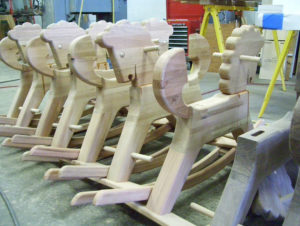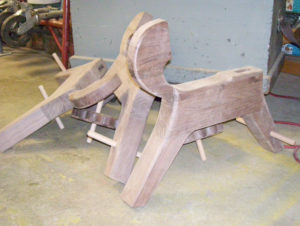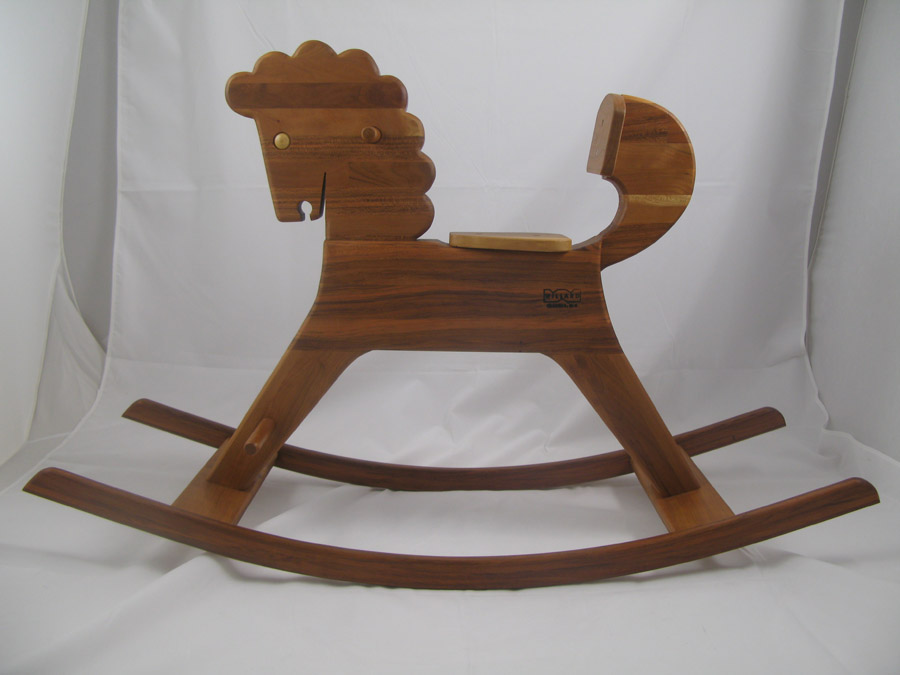I have written previously describing the serendipitous process of finding the antique rocking horse which inspired our “Old Paint” production horse. Some of you may have read this previous story and if so, I hope that you enjoyed it. My focus this time is to talk about how we analyzed the original and how we produced our iteration differently, and why.
I have included pictures of the original Austrian toy which I believe was a 1920’s production item. The original wood specie is Pine with solid sawn rockers and doweled joints. The finish is stenciled enamel paint. I was really taken with the neoclassical outline and the dynamic stance of the piece. Lively, but not cartoonish, I immediately liked it. As originally realized, it is not really compatible with what we produce at WWLLC. We work nearly exclusively in North American hardwoods and do very little with coniferous softwoods. We certainly could use softwoods but believe that hardwoods lend themselves to our stated goal of heirloom quality and longevity. I do realize that the American Shaker movement has produced many stunningly beautiful classics in softwoods. I respect their body of work, we have just chosen otherwise. On the subject of painting, generally we prefer that the finished hardwood of our pieces provide the color palette.
Finally, we chose not to use doweled construction, favoring instead floating tenons, also variously called “loose” or “slip” tenons. The real difference between these and the classic mortise and tenon joint found everywhere in furniture and post and beam construction is that both pieces to be joined are mortised and the floating tenon is a loose and separate component. This works well with two-part epoxy adhesives, which is our process.
 The body of the horse is comprised of five joined components: head, trunk, two legs and the tail. After these components are joined, shaped and sanded we add the foot rests, hand grips, seat, back rest and rocker assembly. We have found glue laminated rockers to be much stronger and less prone to breakage than solid, sawn rockers and all our horses feature these. Also, since we do no decorative painting on these horses, we use a Maple inlay for the eyes regardless of the horse wood specie.
The body of the horse is comprised of five joined components: head, trunk, two legs and the tail. After these components are joined, shaped and sanded we add the foot rests, hand grips, seat, back rest and rocker assembly. We have found glue laminated rockers to be much stronger and less prone to breakage than solid, sawn rockers and all our horses feature these. Also, since we do no decorative painting on these horses, we use a Maple inlay for the eyes regardless of the horse wood specie.
Our finishing process is multiple hand-rubbed coats of a polymerized tung oil. This can be renewed simply in the future should your horse show wear.
Thank you for your interest. Please email any questions which you might have.

